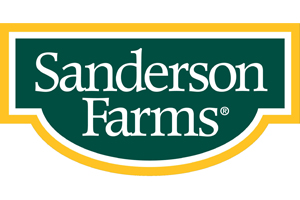Poultry demand drives Sanderson Farms profit rise

US poultry producer, Sanderson Farms has reported a 2.1% rise in earnings, as net sales for the second quarter of fiscal 2013 were $621.2 million compared with $595.0 million for the same period a year ago.
“The results for our second quarter of fiscal 2013 reflect improved market conditions driven primarily by an overall increase in demand for poultry products,” said Joe F. Sanderson, Jr., chairman and chief executive officer of Sanderson Farms. “Our net sales were 4.4% higher compared with the second quarter of fiscal 2012, reflecting higher average sales prices of chicken. While our volumes reflect the production cuts we put in place last fall, demand for chicken remains strong from our retail grocery store and export customers. In addition, while customer traffic through food service establishments remains challenged by macroeconomic factors, several new chicken items on quick serve menus and chicken promotions in casual dining restaurants, coupled with relatively high priced beef, contributed to better market prices during the quarter for products produced at our food service plants.
“Our profitability for the second quarter continued to be adversely affected by relatively high feed costs,” added Sanderson. “Feed costs in flocks processed increased 14.3% compared with last year’s second fiscal quarter, and remain high relative to historical costs. Because of the tight supply of both corn and soybeans, we expect grain prices to remain high and volatile at least until markets get some visibility on the quantity and quality of this year’s corn and soybean crops. The late planting season caused by cold and wet weather across much of the corn belt is contributing to price volatility. That said, we have priced most all of our grain needs through July at levels that will allow us to slightly reduce our feed costs per pound each successive month through July.”
According to Sanderson, overall market prices for poultry products were higher during the second quarter of fiscal 2013 compared with the same quarter a year ago. “Looking ahead, we are reasonably optimistic as we head into the summer months and what is typically a period of better demand for chicken. While grain costs remain above historical levels, demand for chicken products is strong. Weekly broiler egg sets continue to run slightly above last year’s numbers, but breeder placements remain lower and it appears the reduced size of the breeder flock will constrain production over the short term despite higher industry returns. While macroeconomic conditions have continued to affect consumer behavior, market prices for boneless breast meat sold to our food service customers improved through April and May, and market prices for retail grocery store products have also moved higher. Regardless of market conditions, however, we will maintain our focus on our operating performance and sales execution,” Sanderson concluded.








